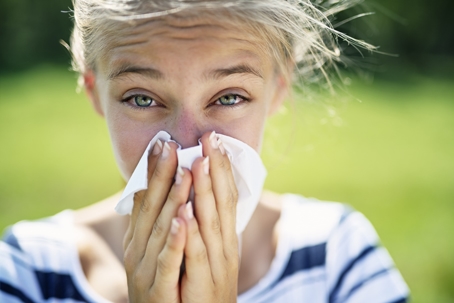Pollen Profiles: The Airborne Agitators
Spring bursts forth with color and life, but it also heralds the arrival of pollen, turning the air into a floating buffet for allergy sufferers. North Texas is particularly abundant in pollen-producing plants, making it a hot spot for seasonal allergies. Here are some of the most common springtime allergens found in the region:
Tree Pollen: Oak, Ash, and Elm
With the arrival of spring in North Texas, so too comes the onset of allergies for many. What are the primary sources of this seasonal discomfort? The pollen from certain trees:
- Oak
- Ash
- Elm
These trees hit their peak pollen production from late February through May. During these months, oak, ash, and elm release vast amounts of pollen into the air, significantly affecting those with allergies. This fine pollen can travel long distances, finding its way into homes and lungs, leading to symptoms ranging from slight irritation to significant breathing issues.
For residents of Dallas and nearby areas, this period often means battling itchy eyes, constant sneezing, and a reduced enjoyment of the outdoors. Being aware of pollen levels through local forecasts helps in planning and reducing exposure, making this challenging season more manageable.
Grasses and Weeds: The Continued Allergy Challenge
As tree pollen levels decline in late spring, grasses and weeds take center stage in North Texas, extending the allergy season into early summer. Key players include Bermuda grass and Johnson grass, which begin dispersing pollen late in the spring and continue through June. Despite being less visible, this grass pollen can be as troubling as tree pollen, infiltrating homes and exacerbating allergies for Dallas residents and beyond.
Effective management involves staying informed about pollen levels, keeping windows closed on high-pollen days, and consulting healthcare providers for suitable allergy medications. This proactive approach can help mitigate the impact of grass and weed pollen, providing some relief during the peak of allergy season.
Mold Matters: Spores in the Spring Scene
Post-Rain Mold Spores Surge
Spring showers may bring May flowers, but in North Texas, they also herald the arrival of an unwelcome guest: mold spores. The region's spring rainfall creates the perfect breeding ground for these fungi, which thrive in moist environments. As the rain subsides and temperatures rise, mold spores take to the air, becoming a pervasive component of indoor and outdoor air quality. This can mean a significant uptick in symptoms such as coughing, wheezing, and nasal congestion for individuals with mold allergies.
It is not just the visible mold that poses a problem; microscopic spores can infiltrate homes and workplaces, often undetected until allergy symptoms manifest. Keeping an eye on local weather patterns and investing in measures to reduce indoor humidity, such as using dehumidifiers or ensuring proper ventilation, can be instrumental in mitigating the impact of post-rain mold spore surges on allergy sufferers.
Humidity and Mold: A Troublesome Duo
The relationship between humidity and mold is a troublesome duo that plagues many North Texans during the spring. As the region's humidity levels rise with the warmer temperatures, so does the potential for mold growth. Mold allergens should not be taken lightly, as they can exacerbate existing respiratory conditions and provoke new allergic responses. The key to combating this duo lies in controlling indoor humidity levels and being vigilant about removing any visible mold growth promptly.
Regular maintenance of HVAC systems, including the use of high-quality filters and timely repairs, can significantly reduce the presence of mold in the home. For residents in Dallas, TX, it's essential to recognize the signs of mold growth and take immediate action. This could mean anything from fixing leaks contributing to damp environments to using air purifiers to filter out or destroy mold spores. A proactive approach to humidity and mold can lead to a healthier spring season for everyone.
Ways to Keep Seasonal Allergens Out of Homes
With springtime allergies in full swing in North Texas, keeping our homes free from these airborne adversaries becomes crucial. Implementing strategies to both avoid bringing allergens indoors and eliminate those that hitch a ride inside is essential for maintaining a sanctuary from seasonal sniffles.
- Keep windows and doors closed during high pollen count days to prevent allergens from entering.
- Vacuum regularly with a HEPA-filter-equipped vacuum cleaner to pick up any allergens that have been brought inside.
- Shower and change clothes after being outside to wash away any pollen that may have been collected on your skin and clothing.
- Use a dehumidifier to maintain indoor humidity between 30%-50% to deter mold growth.
- Clean or replace HVAC filters regularly to ensure they are effectively trapping allergens.
- Consider using high-efficiency particulate air (HEPA) filters in your air conditioning system to trap pollen, dust, and other allergens or a whole-home air purifier to reduce airborne allergens further.
Let Rescue Air and Plumbing Help You Find Springtime Relief
As we've explored the common springtime allergens in North Texas and strategies for relief, it's clear that managing allergies is a multifaceted endeavor. For those in Dallas, TX, Rescue Air and Plumbing is here to help you breathe easier this spring. Our team of experts can ensure your home's HVAC system is optimized to filter out allergens and maintain optimal indoor air quality. Don't let allergies hold you back from enjoying the season – contact us today for a consultation and take the first step towards a more comfortable and healthier home environment.

